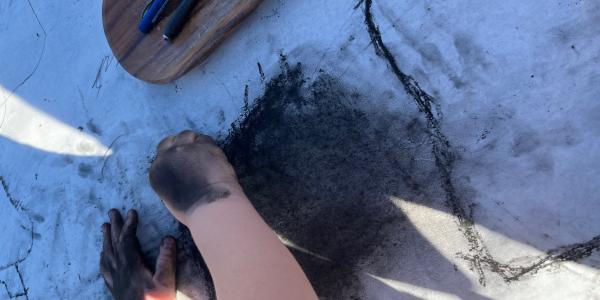

I have had the opportunity to observe many early childhood settings in my role as teacher educator and researcher. Over my time in one preschool classroom in Michigan, I witnessed an early childhood educator carefully watching, listening, documenting, and using observed, varied information to guide her practice. For example, one child, Liddy, loved dramatic play and did not often choose to engage with books. She was still emerging in oral language. Knowing this, her teacher made intentional choices to support Liddy’s literacy development as connected to her play.
I remember one day when Liddy and two classmates were in the dramatic play area. It was set up as a campground, and Liddy was pitching a tent. She asked Damarius and Sam what they should do after the tent was ready. Look for wildlife, they decided. The children asked their teacher to come along, and she suggested taking along some binoculars and a field guide about birds. Liddy “spotted” a bald eagle and a few other birds, and she asked her teacher to read aloud about each one from the field guide.
Her teacher embedded literacy learning within the play scenario, offering valuable details about Liddy’s developing knowledge, skills, and interests.
Gathering, understanding, and using information about children’s learning and development is a complex and challenging process. It has to be: educators and others make critical decisions based on assessments. At the center of assessment—formal or informal, formative and summative—should be the child and for assessment to be authentic and meaningful. Intentional teaching is equally important. Also needed are programs and school systems that value and support a comprehensive, ongoing process that reflects children’s social, historical, and cultural contexts.
This issue of Young Children examines developmentally appropriate and equitable assessment practices for early childhood settings. The cluster of articles describes and illustrates how to expand and deepen our understanding of children through assessment—recognizing their strengths, interests, and agency—in order to make critical decisions about their education and care.
To begin, Hilary Seitz provides an overview of “Authentic Assessment: A Strengths-Based Approach to Making Thinking, Learning, and Development Visible.” This article includes defining authentic assessment and offering key strategies involved in its four-step method. In an accompanying piece, “Making Thinking, Learning, and Development Visible Through ePortfolios,” Seitz explores the role of technology in authentic assessment.
Next, Natacha Ndabahagamye Jones, Amber T. Fowler, and Jennifer Keys Adair outline the importance of “Assessing Agency in Learning Contexts: A First, Critical Step to Assessing Children.” As they write, “Children cannot show and develop a range of talents and skills when they are consistently denied opportunities to move, talk, tell stories, take initiative, create projects, experiment, and work through conflicts.” The authors illustrate why and how to assess agency in early learning environments—before directly assessing children—to better understand and make decisions about each and every child.
The two articles that follow delve into specific domains, starting with writing. In “Not Just Handwriting and Spelling: Assessing Early Composing Skills,” Margaret F. Quinn and Rebecca Rohloff explore all three components of composition—transcription, connection, and discourse—in action and how educators can assess and support children’s early composition, especially during the preschool years.
“Functional Assessment and Positive Behavior Support: The Role of Early Learning Program Leaders and Teachers,” by Barbara Kaiser and Judy Sklar Rasminsky, describes what functional analysis is and how it can be used by teachers and programs to provide positive behavior support and to address challenging behavior in early childhood settings. In addition to going through each step in this process, the authors give a detailed example of how one program designed and implemented a behavior support plan based on a functional assessment.
To complete the cluster, Sara D. Hooks and Jennifer K. Pett share how preschool and primary-grade educators can move “Beyond the Compliment Sandwich: Providing Specific, Meaningful, and Actionable Feedback for Young Children.” After explaining what effective feedback is (and is not), the authors define and give examples of a protocol they have developed to provide feedback to children. Their approach not only acknowledges effort, but also encourages growth and emphasizes how children can apply the feedback in their future learning.
While the issues and practices involved in developmentally appropriate and equitable assessment are complex and challenging, I hope this issue of Young Children supports you in your work to deeply understand and be responsive to the children in your setting.
Assessment can be summative or formative; observational or more structured. As you read the issue, consider:
Four-year-old children in Ms. Ruiz’s preschool classroom explored the properties and potential of charcoal. As they collaborated on charcoal mark making in an outdoor environment, stories, questions, laughter, and theories emerged, with children wondering why the charcoal transferred to their hands and why it shone in the sunlight.
Is your classroom full of children’s artwork? To feature it in Young Children, visit https://www.naeyc.org/resources/pubs/authors-photographers/photos or email [email protected] for details.

We’d love to hear from you!
Send your thoughts on this issue, and on topics you’d like to read about in future issues of Young Children, to [email protected] .